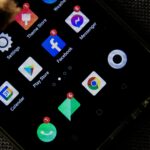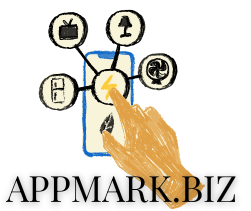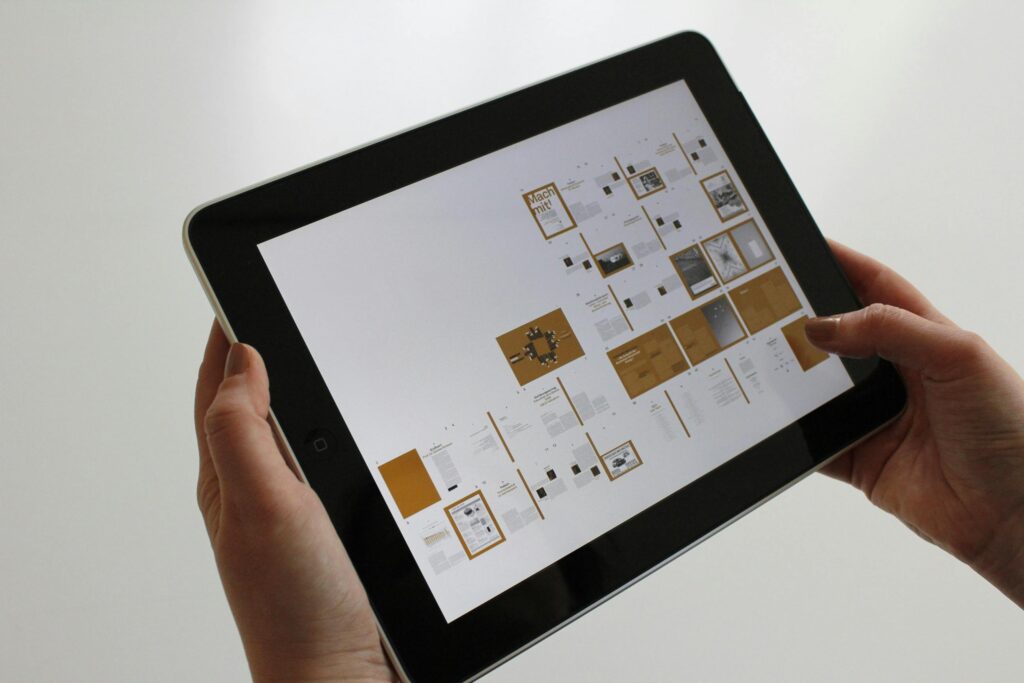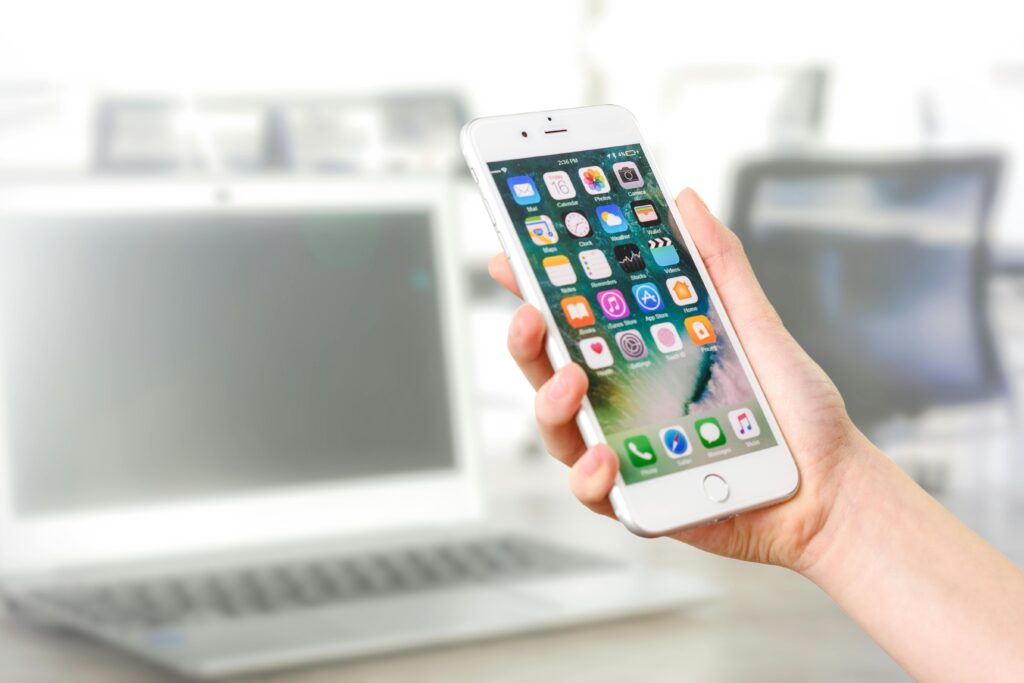Where Apps Learn to Grow
- Using Push Notifications Without Driving Away Users
 by Ace
by AcePush notifications are powerful—but if you’ve ever installed an app, used it once, and then deleted it after a few annoying popups… you know just how dangerous they can be too.
When I built my first app, I treated push notifications like reminders. “Hey, come back!” “New feature!” “You haven’t logged in today!”
I figured if I just kept nudging users, they’d return.What happened instead? People turned off notifications—or worse, uninstalled the app entirely.
That was the wake-up call I needed. I started studying how successful apps use push notifications strategically, not desperately. What I learned changed everything, and it led to major improvements in my user retention.
Let me show you how to use push notifications the right way—without driving your users crazy.
🎯 Step 1: Understand the Real Purpose of Push
Push notifications are not just reminders—they’re communication tools. And like any good conversation, timing, relevance, and tone matter.
Every time you send a notification, you’re interrupting someone. That interruption needs to be welcomed, not annoying.
Before sending anything, ask yourself:
- Does this message add value?
- Is it relevant right now?
- Is it something the user would appreciate?
If the answer is no, don’t send it.
⏱️ Step 2: Timing is Everything
There is no “universal best time” to send push notifications—but there is a best time for your user.
After testing dozens of options, I found that personalized timing—based on user behavior—is far more effective than generic schedules.
For example:
- If a user usually checks the app around 7 PM, schedule their notifications around that time.
- If a user hasn’t engaged in a few days, send a reminder—but don’t send another one the next day. Give it breathing room.
Also: stop sending pushes at 8 AM on weekends or during work hours unless it’s absolutely critical. Nothing gets an uninstall faster than a 6 AM “We miss you!” ping.
🧠 Step 3: Make It Behavioral, Not Broadcast
One of my favorite upgrades was moving from broadcast pushes (“New update out now!”) to behavior-based messages.
Some examples that worked for me:
- “Looks like you haven’t logged a workout this week—need help getting back on track?”
- “You crushed your last streak! Ready to start another?”
- “You saved an item to your wishlist. It’s on sale now.”
These messages feel personal because they are. They tie into the user’s own activity, not a company agenda.
Even if they’re automated, they feel human.
📝 Step 4: Personalize the Content
Don’t just use the user’s name. Personalize what you say, why you say it, and how it’s framed.
One change that worked well: using user preferences to shape notification tone.
In one app, I let users choose their “motivation style”—encouraging, direct, or fun. That one small feature dramatically improved open rates and reduced opt-outs. Why? Because people got messages in their tone, not mine.
Think beyond “Hey {name}!” and into “What would this person actually want to hear?”
🧪 Step 5: Test, Learn, Repeat
Push strategy isn’t set-and-forget. You need to measure everything:
- Open rate
- Click-through rate
- Uninstall rate after push
- Opt-out rate
If you’re getting high opt-outs or uninstalls after certain messages, that’s a red flag. Change your tone, timing, or frequency.
A/B test headlines. Try emojis. Remove emojis. Try casual vs professional wording. Let the data tell you what works—not your gut.
When I did this, I was shocked to learn that the “simple, no-frills” messages performed best in one app, while emoji-packed, friendly nudges won in another.
❌ What Not to Do
Let’s make this clear: users don’t owe you their attention. If you abuse push notifications, you break trust—and it’s hard to earn it back.
Here’s what I don’t do anymore:
- Send more than 2–3 push notifications per week (unless the app is high-engagement like fitness or finance)
- Use fear or guilt in my messages (“You’re falling behind…”)
- Auto-push after every small in-app event
- Re-pitch users constantly to upgrade or subscribe
Pushes should be helpful, not salesy.
🙌 The Bottom Line: Respect the User
The best push notification feels like a friend giving you a gentle nudge—not a desperate sales rep blowing up your phone.
When you treat users with respect—by sending timely, relevant, helpful messages—you keep them engaged. You build trust. And ultimately, you build a relationship that lasts longer than one download.
Push isn’t about pressure. It’s about connection.
Use it wisely, and your users won’t just stay—they’ll thank you for it. - Building a Pre-Launch Hype Campaign for Your App
 by Ace
by AceWhen I launched my first app, I thought launch day would be this massive moment where everything clicked—users would flood in, traffic would spike, and I’d sit back and watch it grow.
Instead… nothing happened.
It wasn’t because the app was bad. It was because I didn’t build any hype before launch. I built in silence, dropped the product cold, and expected the world to care.
Since then, I’ve learned that what you do before launch matters just as much as the app itself. Now, I treat pre-launch campaigns like a product in their own right—designed, tested, and optimized to create momentum.
Let me show you what works.
🎯 Step 1: Define Who You’re Building Hype For
Before you start throwing out teasers or ads, get crystal clear on your audience. Who is this app for? What problem does it solve? And what makes it exciting?
For one app I built in the fitness space, I created an entire pre-launch list targeting personal trainers and gym enthusiasts. The copy, images, and positioning spoke directly to their pain points—things like tracking progress, keeping clients engaged, and saving time.
Hype only works if it resonates. And resonance starts with specificity.
🧲 Step 2: Create a “Hype Magnet” Landing Page
Every pre-launch campaign needs a simple, beautiful landing page with one job: capture email addresses.
I like to keep it tight:
- A compelling headline
- A short video or image of the app in action
- A signup box with a benefit (e.g. “Get early access,” “Join the beta,” or “Be the first to try it”)
Use a tool like ConvertKit, Mailchimp, or a no-code builder like Carrd. Don’t overcomplicate it—the faster you get the page up, the faster you start collecting interest.
📬 Step 3: Use Email to Build a Relationship
Once you’ve got people on your list, don’t ghost them until launch day. That’s a huge mistake.
Send updates regularly. Show off progress, behind-the-scenes stories, and small wins. Let people vote on features or designs. I’ve found that this kind of inclusion builds loyalty before users even touch the app.
You’re not just marketing—you’re letting early adopters feel like insiders.
📢 Step 4: Hype It Where Your Users Hang Out
Reddit. Discord. Twitter. Indie Hackers. Facebook groups. Wherever your ideal users are talking, join the conversation.
Just don’t be spammy. Share your journey. Ask for feedback. Tease features. And when you do drop the launch, you’ll already have a built-in support base.
One trick I love? Teasing the app with a countdown and a visual sneak peek. It builds curiosity and gives people a reason to check back in.
🚀 Launch Day Isn’t the End—It’s the Beginning
A great pre-launch campaign means launch day isn’t just a cold start—it’s a celebration.
If you’ve done this right, you’ll already have a list of people excited to try the app, talk about it, and give you that critical early traction.
Don’t just build the product. Build the hype.
Because if no one’s watching when you go live, you’re launching in the dark.
- How to Create Viral Loops Inside Your App (Without Feeling Spammy)
 by Ace
by AceIf you’ve ever looked at apps like Dropbox, Calendly, or Notion and wondered “How did they grow so fast without spending a fortune on ads?”, the answer usually comes down to one key principle: viral loops.
When I launched my first app, I thought a referral program was all I needed. I slapped on a “Share this app with a friend” button, waited… and nothing happened.
That’s when I realized viral growth doesn’t happen just because a sharing button exists. It happens when the product experience itself makes sharing inevitable—natural, even enjoyable.
Let me break down what I’ve learned about creating viral loops that actually work.
🔄 First, What Is a Viral Loop?
A viral loop is when one user brings in more users—organically—and the loop repeats.
Think of it like this:
- A user signs up.
- That user performs a key action that shares or exposes the app to others.
- Those people join and repeat the cycle.
If done right, this loop becomes self-sustaining. It’s not about going viral on TikTok for a day—it’s about creating ongoing, compounding growth.
🧩 Step 1: Make Sharing Part of the Core Experience
Here’s the mistake I made early on: I treated referrals like a separate feature.
If your app helps users schedule meetings (like Calendly), then the invite link is the product. Every time someone uses it, they see the app in action. That’s frictionless exposure.
If you run a journaling app, maybe let users generate quote cards from their entries and share them on social. That way, they’re not just promoting you—they’re expressing themselves. The app just happens to power it.
So ask yourself:
“How can I make sharing feel like a natural outcome of using the app?”
🎁 Step 2: Offer Real Incentives (But Not Just Discounts)
Yes, people love free stuff—but they also care about value.
Dropbox nailed this by offering free storage space for every referral. That’s directly aligned with why users signed up in the first place.
When I experimented with my own app, I found that offering early access to features performed better than gift cards or cash. Users felt like insiders. That matters more than a $5 coupon.
Pro tip: if your incentive costs you little but means a lot to the user (like bonus features or digital rewards), you’ve found a sweet spot.
📲 Step 3: Reduce Friction to Near-Zero
Even the best referral ideas will flop if they’re clunky to use.
Make sure your viral loop is:
- One tap to share
- Personalized if possible (e.g., pre-filled messages)
- Trackable (so users know their invites worked)
I’ve tested flows where a user could refer someone in under 10 seconds—and others that took a minute. Guess which one worked better?
Friction kills virality. Speed and clarity fuel it.
📈 Step 4: Measure Your Loop’s Effectiveness
It’s tempting to launch a referral feature and call it a day. Don’t.
Track metrics like:
- K-Factor: the average number of new users each user brings in
- Invite conversion rate
- Top referrers (and why they’re performing better)
When I added a simple leaderboard for top referrers, engagement tripled. A little gamification can go a long way if it aligns with your brand.
❌ What Not to Do
Let’s talk about what kills viral loops:
- Nagging popups that beg users to share every 30 seconds
- Generic incentives (nobody wants another Amazon gift card)
- Forcing users to share before unlocking basic features
If sharing feels like a chore, it won’t work. If it feels like a brag-worthy benefit, people will do it without thinking.
🎯 Final Thought: Build Loops, Not Campaigns
Marketing campaigns are temporary. Viral loops are built into the product.
I used to chase growth through ad spend, but what changed everything was learning to let my users do the marketing for me—by building systems they actually wanted to share.
So take a step back. Look at your app not as a tool, but as a conversation starter. What would make your users say, “You’ve got to try this”?
That’s the loop you want to build.
Let’s grow smart—one share at a time.


